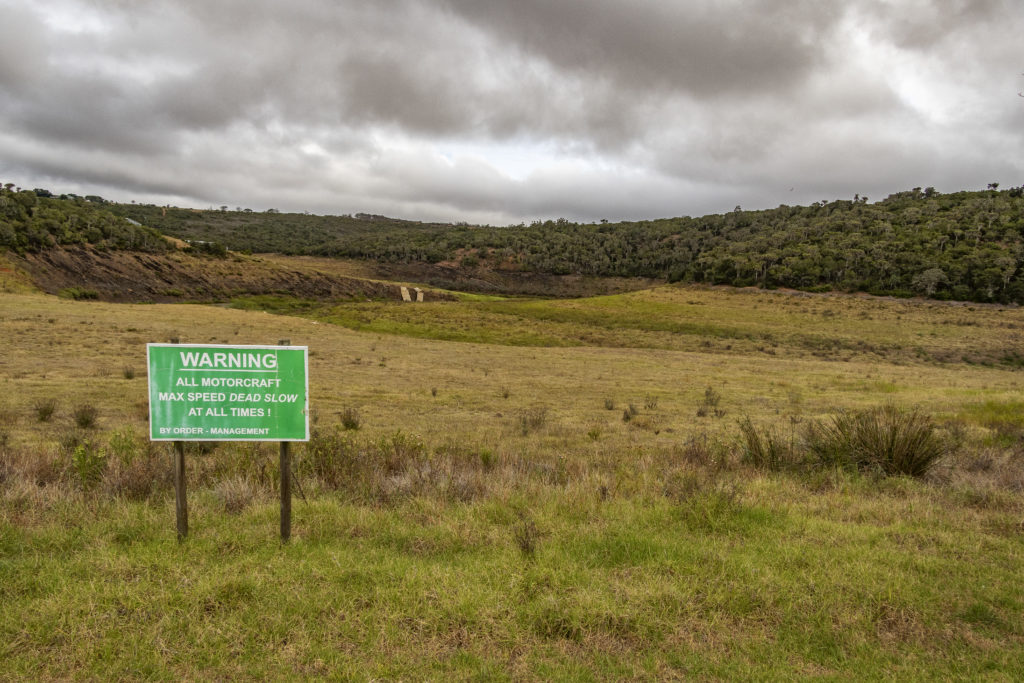[pdf-embedder url=”https://www.grocotts.co.za/wp-content/uploads/2021/02/SETTLERS-AND-HOWISONS-COMPARISON.pdf” title=”SETTLERS AND HOWISONS COMPARISON”]
With Settlers Dam, west Makhanda’s main water supply reservoir down to 5% of its capacity and the much smaller Howison’s Poort Dam at around 25%, the rains of the past few weeks have done nothing to ease the town’s water concerns. And farmers face a bleak winter unless they get rain substantial enough for veld growth within the next few weeks.
Makana’s water manager Gubevu Maduna confirmed that Settlers Dam is at its lowest yet, currently holding only 5% of its 5 300 megalitre capacity. It has not been possible to pump water from this dam since the drought took its levels to a critical low, some months ago.
“We are pumping from Howison’s Poort via Waainek at the moment though,” Maduna confirmed. The town last week was without a supply for a day while repaired pumps at the water treatment works were being recommissioned.
Water in the recently refurbished Milner and Jamieson dams was insignificant, Maduna said, and so James Kleynhans WTW remained the town’s main supply.
Phases 3 and 4 of the upgrade of the upgrade to the water treatment works north-east of Makhanda are still on schedule for completion in September, Maduna confirmed.
Phase 3 entails the construction of a replica of the existing treatment plant. Phase 4 is the refurbishment of the existing plant.
James Kleynhans produces 12 megalitres a day – two beyond its design capacity. Once the second plant is up and running, the total output capacity will be around 20ML.
Good news for the reliability of the James Kleynhans supply – which feeds Joza and other areas in east Makhanda – is that three new pumps have been bought, along with two motors, and this will allow for uninterrupted rotation of pumps when one is not working.
A water conservation and demand management project is Maduna’s current priority.
“Even though Waainek and James Kleynhans are together producing 17ML a day, it’s not enough because of all the water that we continue to lose.”
GMDirect can confirm that residents in parts of Joza had by Wednesday been without water for three days.
Meanwhile, Makana officials met with Gift of the Givers and residents in Alicedale and Riebeeck East about finding solutions to erratic water provision.
Maduna urged residents to continue to report water links via mobisam.net or the Makana Local Municipality Facebook page.
Winter food
“It’s not pretty,” says Director of Pumba Private Reserve Dale Howarth. “We’re almost back down to the situation we were in in November 2019.
While gardens in Makhanda, and areas to the north and east have had welcome rain, farmers west of the town – and across the areas covered by the Albany and Bathurst farmers associations – are dreading another hungry winter. Howarth is Chairperson of the Central Albany Agricultural Association, as well as vice-chair of the Albany and Bathurst Farmers Association and regularly communicates with farmers from Sidbury across to the Bushmans River area to north of Makhanda, as well as Lower Albany, Bathurst, from Nanaga to the Fish River, Riebeeck East and Alicedale.
The catchment for Settlers dam is to its west.
“Our average rainfall in January and February is 50mm. By now we should have had 100mm,” Howarth said. “We haven’t – we’ve had 30 – 5mm in January and 25mm so far in February.”
When it did rain, it was patchy and inconsistent.
“In the last rains, Kwandwe got an amazing 42mm. Here on the Sidbury side, we got 4mm.
“It’s now seven years since water was running into the dams and filling them up,” Howarth said. “We’re not having to feed livestock yet, but if we don’t see enough rain for growth in the next few weeks, farmers are going to have to provide winter food.
Neighbouring stock farms had had to drill boreholes to give their animals water because all their dams were dry.
Early in 2019, the area experienced good rains. According to Howarth’s measurements, rainfall in 2019 was:
January 122mm
February 95mm
March 74mm
April 36mm
October 77mm
“And since then, effectively nothing. It’s not pretty.”
Why it’s this bad
Head of the Geography Department at Rhodes University, Professor Ian Meiklejohn explained the discrepancy in rainfall within the Makhanda area, as well as the reason it’s been so difficult for the area to recover.
“Where we are located means we are on the edge of the summer rainfall area and the edge of the winter rainfall area, so we get a double negative whammy,” Meiklejohn said.
“If you look at satellite imagery and use Infra-Red sensors, the situation now is dire. You can draw a line at Mountain Drive that separates healthy from unhealthy vegetation.
“This is due to a rain shadow effect and the underlying geology. Where you have Witteberg quartzites, the water stored keeps the vegetation healthy.”
https://www.grocotts.co.za/2020/09/01/infrastructure-in-focus/
https://www.grocotts.co.za/2020/10/15/welcome-rain-but-we-need-more/


